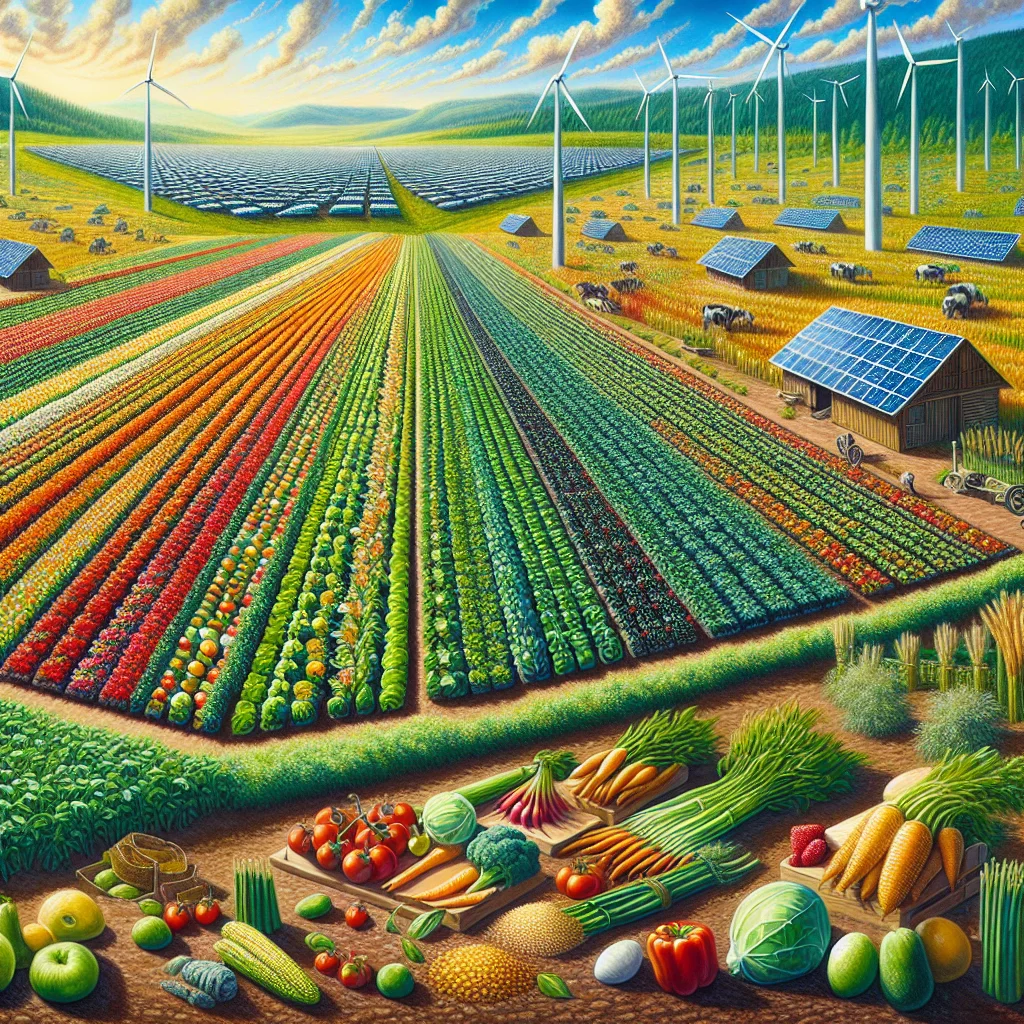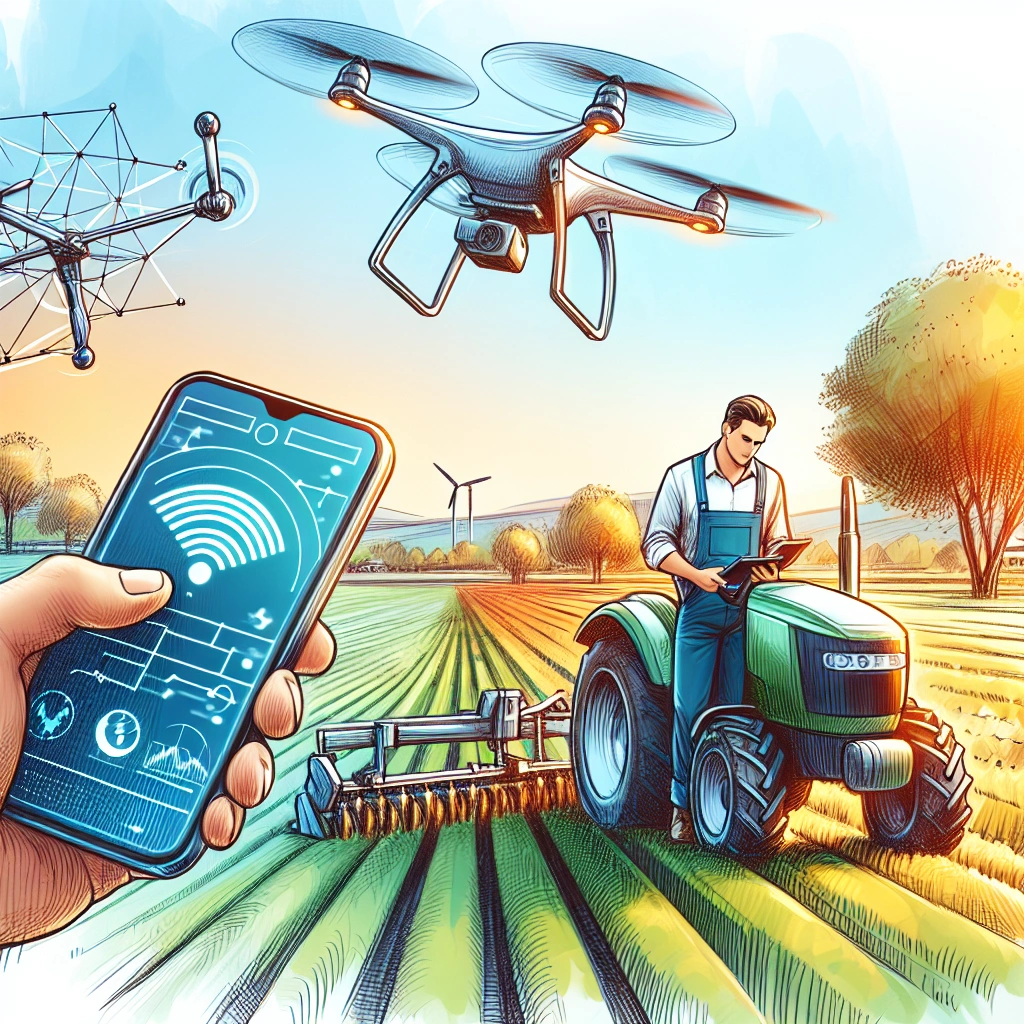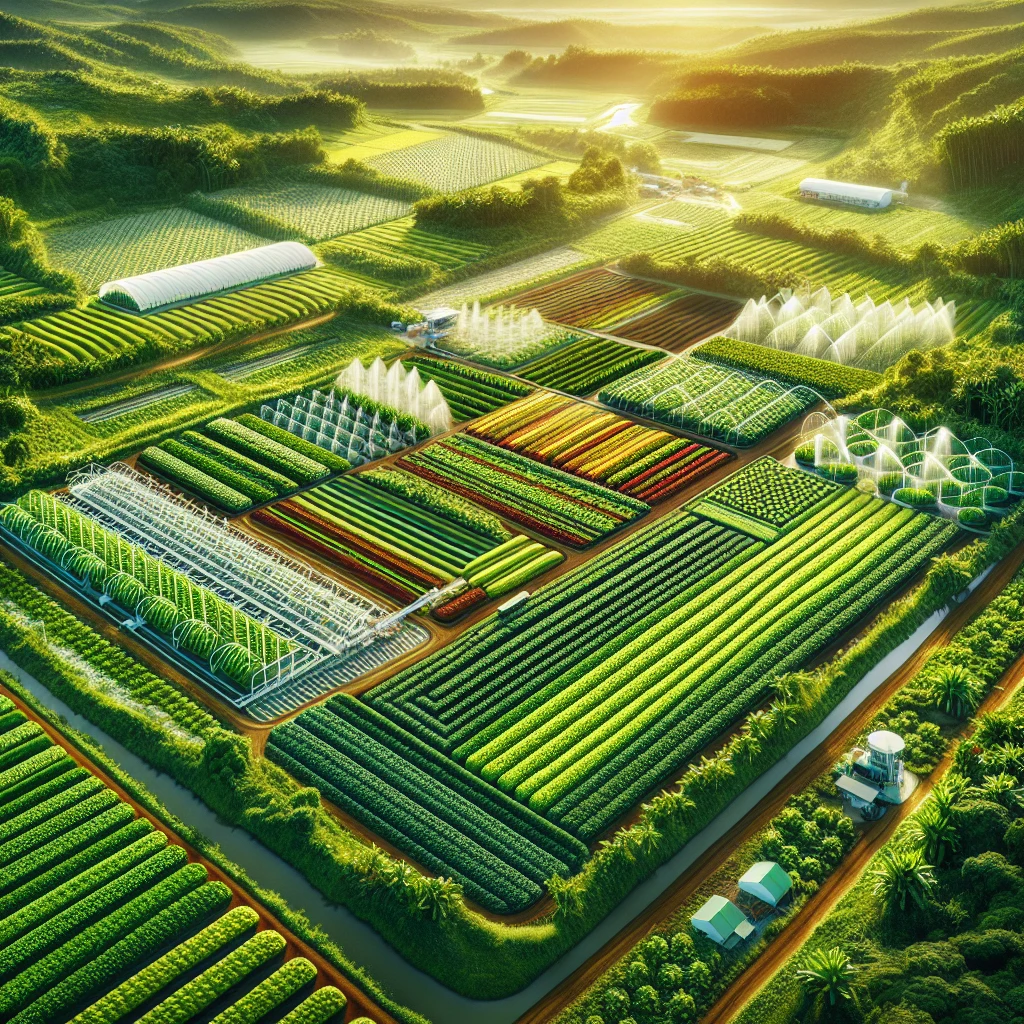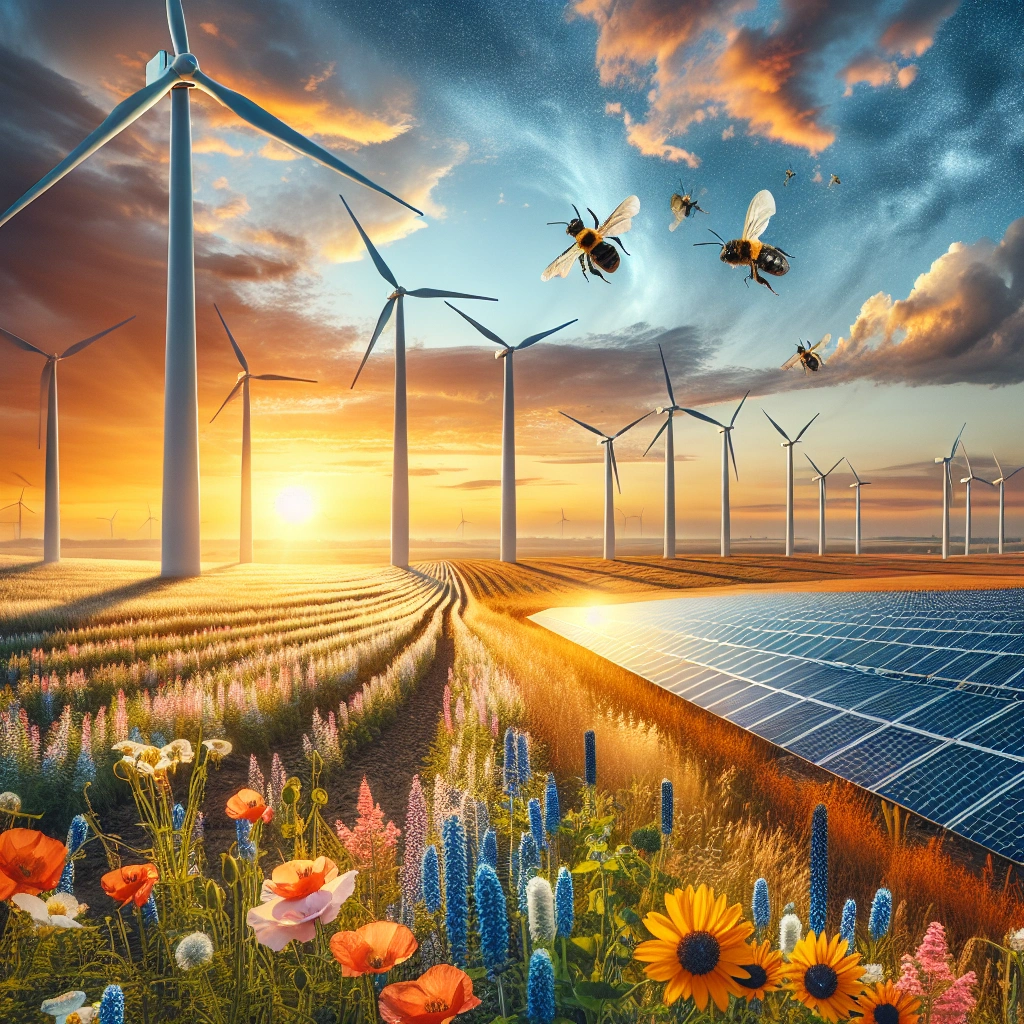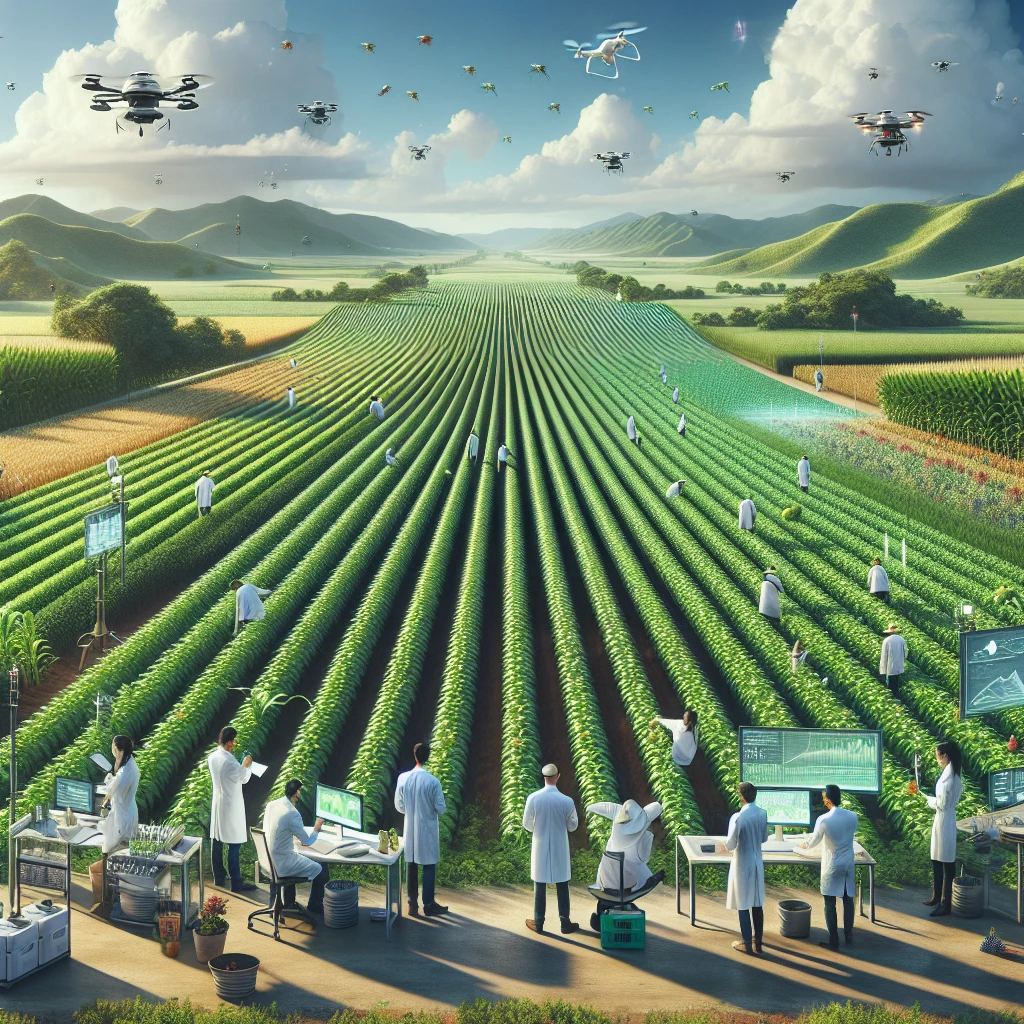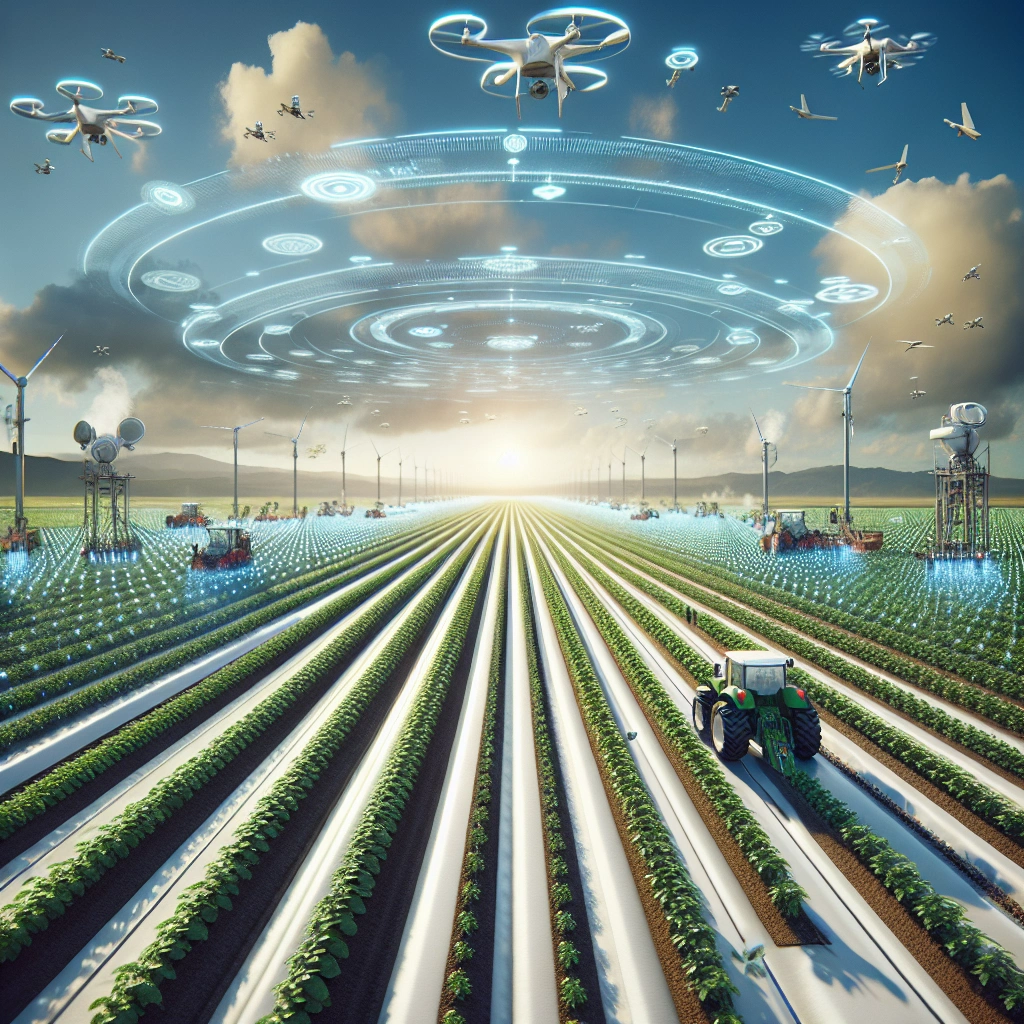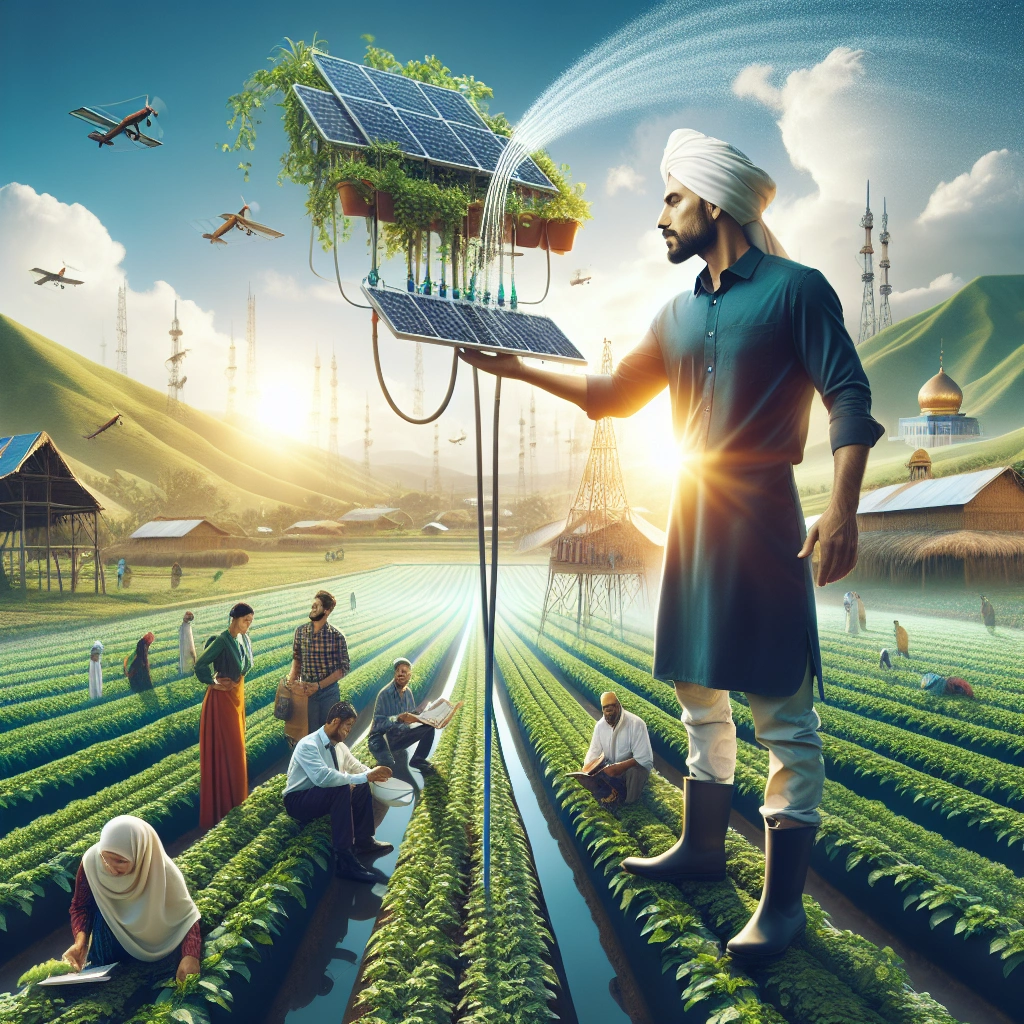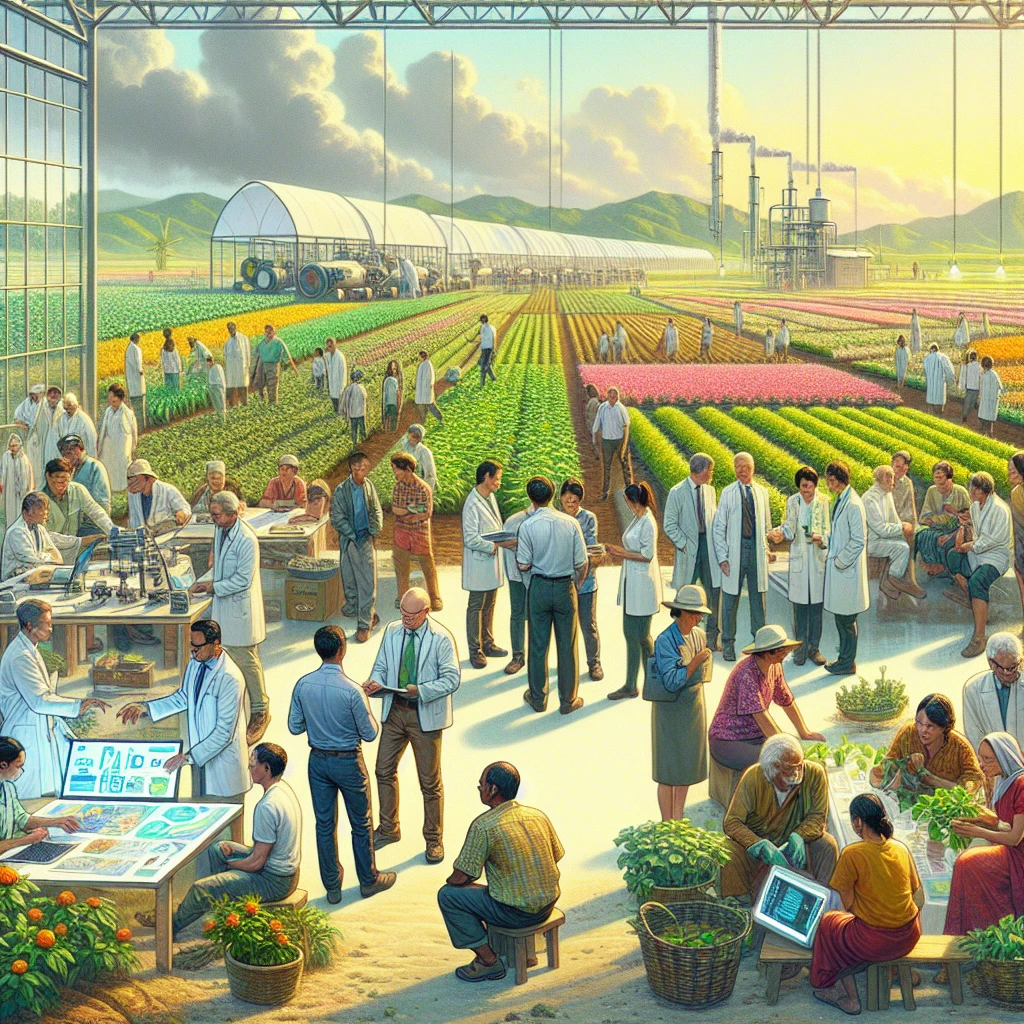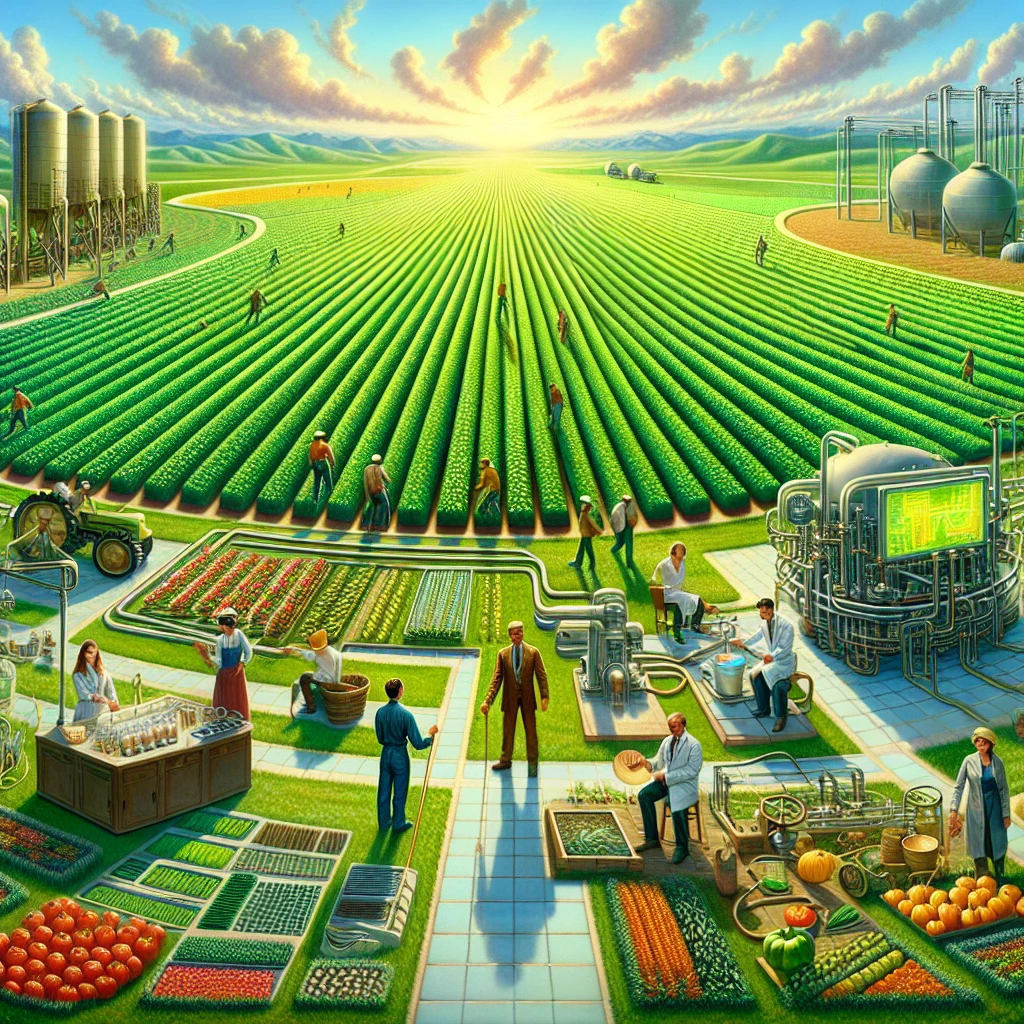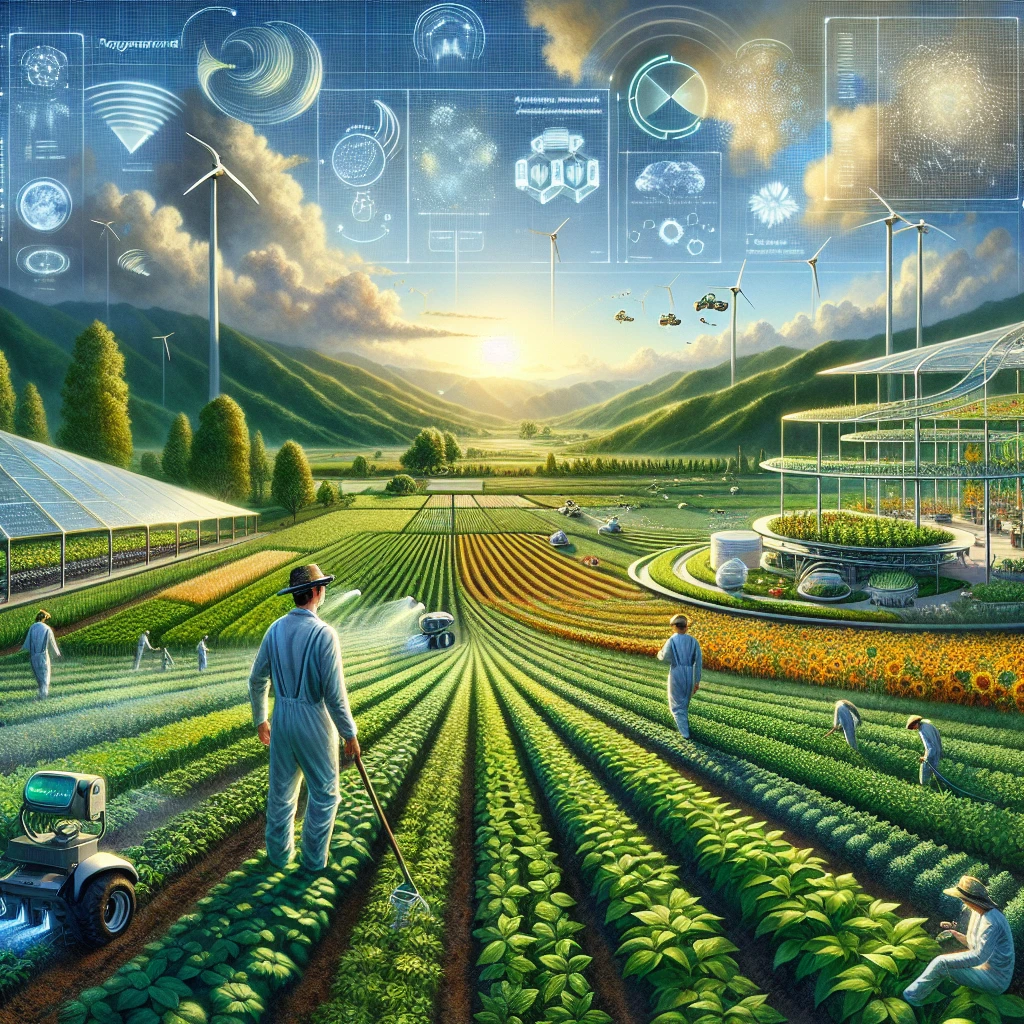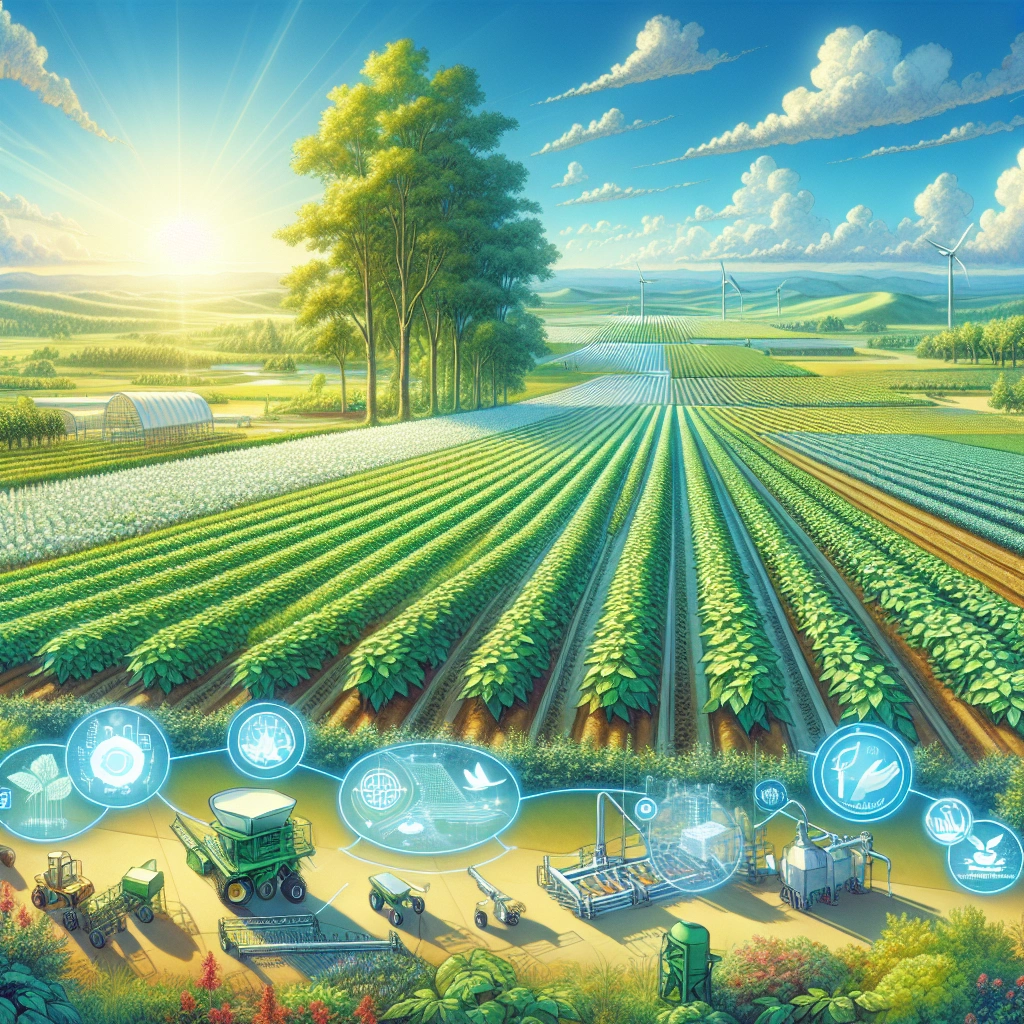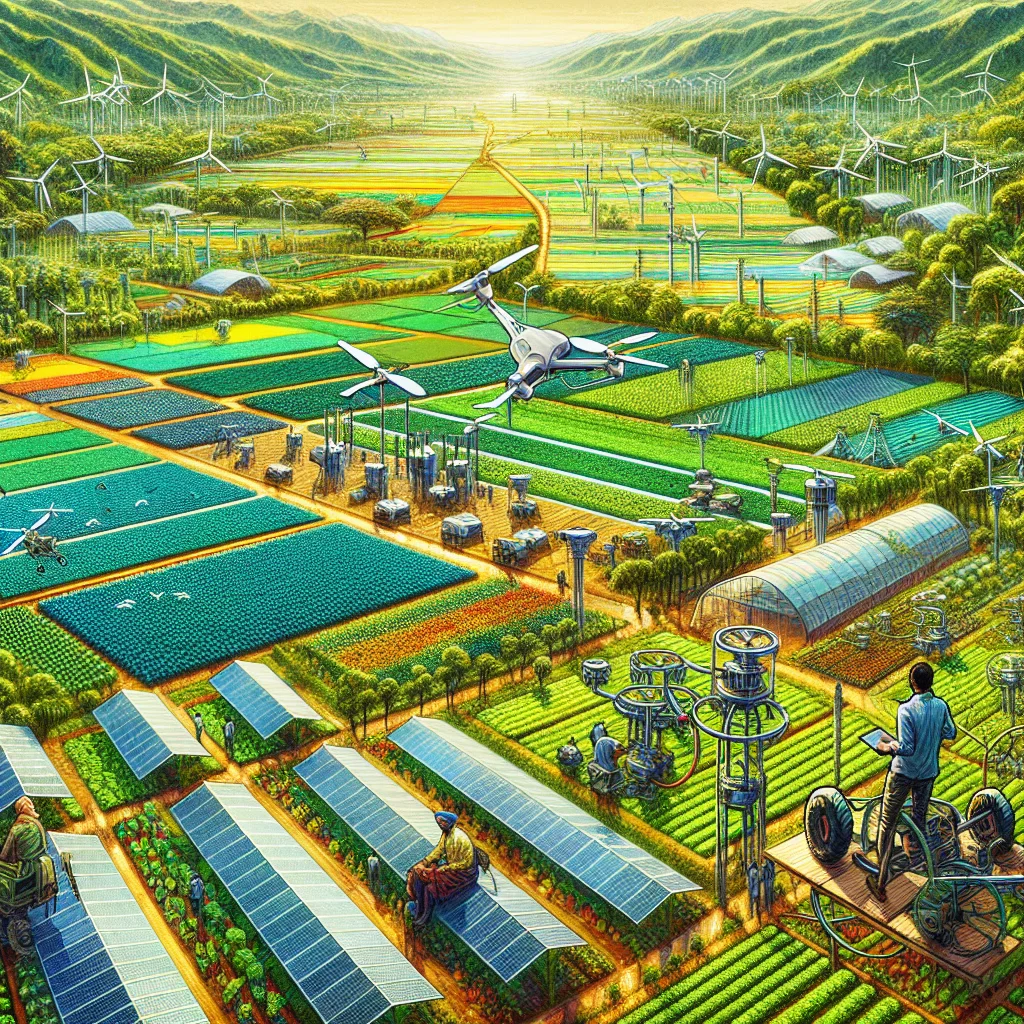

Agricultural innovation involves bringing new or existing products, processes, or ways of organization into use for the first time to increase effectiveness, competitiveness, resilience, and environmental sustainability. This is crucial for contributing to food security and addressing the need for increasing production and enhancing quality in farming.
Innovation in agriculture provides opportunities for producers to increase productivity while better managing natural resources, ensuring long-term sustainability. It also presents a profitable growth opportunity for innovative companies in the agriculture sector, feeding the growing world population and protecting the planet.
The adoption of sustainable agricultural practices, such as no-till farming, crop rotation, and the use of cover crops, can reduce greenhouse gas emissions, make soil healthier, and increase farmland productivity over time.
Check out this Youtube video on agricultural innovation examples and discover how innovation is changing the landscape of food and agriculture!
History of Agricultural Innovation
Early examples of agricultural innovation
The history of agricultural innovation dates back to ancient times, showcasing the remarkable ingenuity of early civilizations. For instance, the invention of the plow around 3000 BCE marked a significant milestone in enhancing productivity through efficient land cultivation.
Additionally, the development of irrigation systems circa 6000 BCE revolutionized farming by maximizing water distribution for crop growth. These early innovations laid the foundation for the evolution of agricultural practices and set the stage for further advancements.
Impact of historical agricultural innovations
Historical agricultural innovations have had a profound impact on society, shaping economies and livelihoods across generations. The Industrial Revolution in the mid-1800s witnessed the introduction of horse-powered machines, ushering in a new era of mechanized farming.
Notably, the invention of the cotton gin and the mechanical reaper by visionaries like Eli Whitney and Cyrus McCormick transformed agricultural processes, leading to significant increases in efficiency and crop yields. These innovations redefined the agricultural landscape and continue to influence modern farming practices.
| Innovations | Impact |
|---|---|
| Plow and Irrigation Systems | Enhanced productivity and efficient land cultivation |
| Cotton Gin and Mechanical Reaper | Revolutionized agricultural processes, leading to increased efficiency and crop yields |
These historic advancements signify the enduring legacy of agricultural innovation, underscoring the pivotal role of ingenious inventions in driving the progress of farming practices.
This embodies the essence of agricultural innovation, underscoring the transformative power of pioneering inventions throughout history.
Sustainable Agriculture
Examples of sustainable agricultural innovations
1. Vertical Smart City Farms: These innovative farms utilize vertical space to grow crops in urban environments, maximizing efficiency and reducing the need for large tracts of land.
2. Regenerative Ocean Farming: Pioneered by Bren Smith, regenerative ocean farming focuses on sustainable cultivation of ocean resources to promote ecological balance and food production.
3. Trapview Pest Monitoring System: This system provides real-time data on crop conditions, allowing farmers to monitor and forecast pest activity, leading to more sustainable pest management practices.
4. AeroFarms Indoor Vertical Farming: AeroFarms uses a state-of-the-art indoor vertical farming system to grow a wide variety of crops with significantly less water than traditional farming methods, improving sustainability and resource efficiency.
5. Sustainable Agricultural Business Models: Case studies have demonstrated innovative sustainable agricultural business models that enhance productivity while maintaining ecological balance, such as permaculture systems and grassroots level implementation in Indian farms.
Benefits of sustainable agricultural practices
Sustainable agricultural practices not only protect the environment and preserve natural resources but also contribute to enhanced soil fertility and healthier farming ecosystems. These practices aim to increase profitable farm income while fostering social equity and a more equitable food system, aligning with the goal of ensuring long-term sustainability in food production.
Technological Innovations
The use of drones in precision agriculture has revolutionized farming practices. Drones equipped with advanced sensors provide multispectral imaging, offering detailed insights into the health and development of crops.
By utilizing drones, farmers can efficiently monitor crop conditions, identify pests, and optimize irrigation strategies, ultimately leading to improved crop yields and resource utilization. Furthermore, drones enable farmers to cover vast hectares in a matter of minutes, allowing for quick and accurate data collection for precise decision-making.
Moreover, automated irrigation systems have brought significant benefits to farming. These systems enhance water efficiency by delivering the precise amount of water and nutrients required by the crops, thereby reducing water wastage and minimizing plant stress.
By leveraging smart irrigation technology, farmers can monitor soil moisture levels, ensuring optimal conditions for crop growth while conserving water resources. The automation of irrigation systems further contributes to improved crop yields and enhanced agricultural sustainability.
| Use of Drones in Precision Agriculture | Automated Irrigation Systems in Farming |
|---|---|
| – Enhanced crop monitoring | – Improved water efficiency |
| – Identification of pests and diseases | – Optimal water and nutrient delivery |
| – Efficient data collection for decision-making | – Soil moisture monitoring for crop growth |
The integration of drones and automated irrigation systems represents remarkable agricultural innovations that have transformed farming practices, ensuring optimal crop management and resource utilization.
Biotechnology
Genetic modification in crops
Genetic modification in crops has revolutionized agriculture, offering improved yields and resistance to pests and diseases. For instance, the development of genetically engineered crops with herbicide tolerance and insect resistance has significantly reduced the need for chemical pesticides, promoting more sustainable farming practices.
One prominent example is the use of genetic modification to confer herbicide tolerance in crops such as soybeans and corn, leading to increased productivity and reduced environmental impact.
Disease-resistant crop varieties
The advancement in biotechnology has enabled the creation of disease-resistant crop varieties, addressing the perpetual challenge of crop diseases. Through genetic engineering, crops can be designed to possess enhanced natural resistance to common plant diseases.
For example, the development of disease-resistant varieties of wheat and rice has played a crucial role in protecting these staple crops from devastating pathogens, ensuring food security and stability in the face of agricultural diseases.
Below represents a table of comparison for the two biotechnological advancements in agriculture:
| Aspect | Genetic Modification in Crops | Disease-Resistant Crop Varieties |
|---|---|---|
| Advantages | Reduced pesticide use, increased yields | Enhanced natural resistance, improved food security |
| Example | Herbicide-tolerant soybeans, insect-resistant corn | Disease-resistant wheat, rice |
| Impact on agriculture | Sustainable farming practices, reduced environmental harm | Improved food security, protection against crop diseases |
These examples of biotechnological innovations demonstrate the transformative potential of genetic engineering in enhancing agricultural sustainability and productivity.
Innovative Farming Practices
Vertical farming techniques
Vertical farming techniques revolutionize traditional agriculture by growing crops in vertically stacked layers, offering numerous advantages. By utilizing enclosed structures, vertical farming is immune to adverse weather conditions, ensuring reliable year-round crop production.
Additionally, it optimizes space usage, minimizes water consumption, and decreases the environmental impact compared to conventional farming methods. This innovative approach enhances agricultural sustainability and efficiency.
Aquaponics and hydroponics
Aquaponics and hydroponics are groundbreaking soilless cultivation methods that redefine traditional farming. Aquaponics combines hydroponic plant growth with aquaculture, utilizing fish waste to nourish plants within a closed nutrient cycle.
On the other hand, hydroponics directly infuses nutrient solutions into water to foster plant growth, offering a sustainable and efficient approach to agricultural production. These techniques mitigate water usage and space constraints, presenting a promising future for modern farming practices.
| Categories | Vertical Farming Techniques | Aquaponics and Hydroponics |
|---|---|---|
| Space Utilization | Efficient use of space due to vertically stacked layers | Optimal space usage, especially in urban areas |
| Water Usage | Minimal water consumption | Reduced water usage through closed systems |
| Environmental Impact | Lower environmental impact compared to traditional farming | Sustainable and efficient agricultural practices |
| Crop Production | Reliable year-round crop production| Sustainable cultivation methods for diverse climates |
Data and Analytics in Agriculture
Use of big data in farming
Big data in farming is revolutionizing the agricultural industry by providing farmers with granular insights into various aspects of farming processes. For instance, it enables farmers to monitor irrigation water, reduce erosion, save fuel, manage employees, and address specific crop or livestock needs.
By harnessing big data, farmers can make informed decisions based on rainfall patterns, water cycles, fertilizer requirements, and more, thus significantly enhancing resource management and overall productivity.
Predictive analytics for crop management
Predictive analytics plays a pivotal role in enhancing crop management by utilizing data from diverse sources including soil, weather, satellite, and drone imagery. By integrating these data sets, predictive analytics enables farmers to make accurate estimations of crop yield, quality, and potential threats such as outbreaks of pests and diseases.
Furthermore, predictive analytics empowers farmers to optimize crop protection and make strategic decisions regarding crop selection and harvesting, ultimately contributing to more efficient and sustainable agricultural practices.
| Use of big data in farming | Predictive analytics for crop management | |
|---|---|---|
| Key Benefit | Provides granular insights for informed decision-making | Enhances crop management for optimal yield and protection |
| Example | Monitors irrigation water, reduces erosion, and saves fuel | Estimates crop yield and quality while predicting pest outbreaks |
| Impact | Improves resource management and overall productivity | Facilitates more efficient and sustainable agricultural practices |
The use of big data and predictive analytics in agriculture signifies a significant shift towards data-driven and technology-enabled farming practices, empowering farmers to make informed decisions and maximize productivity.
Renewable Energy in Agriculture
Solar-powered farming equipment
With solar-powered farming equipment, farmers can reduce their reliance on diesel fuel, thus lowering their operating costs and minimizing environmental impact. This innovative approach also enables advanced precision farming, leading to higher efficiency in resource utilization and improved crop yields.
For example, solar-powered irrigation systems can automate the irrigation process, ensuring optimal water usage for crop growth.
Another example of the advantages of solar-powered farming equipment is the ability to harness reliable electricity directly on agricultural premises. This not only enhances operational efficiency but also contributes to sustainable and eco-friendly agricultural practices.
Biogas production from farm waste
Biogas production from farm waste offers a sustainable solution for energy generation and waste management. By utilizing organic materials like animal waste, farmers can produce biogas through anaerobic digestion, thereby reducing greenhouse gas emissions and providing a renewable energy source.
This process contributes to a circular economy where waste is transformed into valuable energy resources.
Furthermore, biogas production provides an opportunity to recycle organic waste into renewable energy and soil products, fostering environmental sustainability and mitigating the environmental impact of agricultural activities. Additionally, the generation of biogas from farm waste helps in reducing carbon emissions associated with traditional energy sources, thus promoting a greener and more sustainable agricultural sector.
Crop Protection and Pest Management
Integrated pest management techniques
Integrated Pest Management (IPM) is an innovative approach that utilizes a combination of pest control methods to minimize the negative impact on crops, economy, and the environment. An example of agricultural innovation in IPM is the use of pheromone traps to monitor and control pest populations.
These traps release synthetic versions of pest mating pheromones to disrupt their reproductive cycle, reducing the need for chemical pesticides and minimizing environmental harm.
Biological control methods for pest management
Biological control methods involve the use of natural predators, parasites, and pathogens to regulate pest populations. An exemplary agricultural innovation in biological control is the introduction of beneficial insects, such as ladybugs and lacewings, to combat aphid infestations.
These predatory insects prey on aphids, effectively managing their populations without the use of harmful chemicals, thus promoting sustainable pest management practices.
Agricultural Robotics
The use of robots for harvesting has revolutionized the agriculture industry, leading to increased efficiency and productivity. Harvesting robots are able to perform tasks faster and with higher accuracy than human labor, thus reducing labor costs and improving overall output.
This technology has enabled the agriculture industry to become more sustainable, productive, and efficient.
Automated weeding and planting robots have redefined sustainability in agriculture by providing a necessary blend of efficiency, precision, and environmental impact. These robots target specific crop areas and contribute to reduced reliance on chemical herbicides, promoting a more sustainable farming future.
Additionally, weeding robots help to increase the efficiency of agricultural operations by automating labor-intensive and time-consuming tasks.
| Advantages of Agricultural Robotics |
|---|
| Increased efficiency and productivity |
| Redefined sustainability in agriculture |
| Precision in targeting specific crop areas |
Agricultural Innovation in Developing Countries
Examples of low-cost agricultural innovations
- Use of drip irrigation systems: Small-scale farmers in developing countries are adopting low-cost drip irrigation systems to efficiently manage water resources and improve crop yields.
- Organic fertilizers and composting: By utilizing locally available materials such as kitchen waste, animal manure, and crop residues, small-scale farmers can produce organic fertilizers and compost to enhance soil fertility and reduce the reliance on expensive chemical inputs.
Impact of innovation on small-scale farming
- Increased productivity and income: The adoption of low-cost agricultural innovations has led to higher crop yields, improved quality of produce, and Increased revenue for small-scale farmers.
- Sustainable land management: With the implementation of eco-friendly practices and innovations, small-scale farmers have contributed to sustainable land management, minimizing environmental degradation and conserving natural resources.
Stakeholder Collaboration for Innovation
Partnerships between farmers and tech companies
Partnerships between farmers and tech companies have been pivotal in driving agricultural innovation. For instance, collaborative efforts between farmers and tech companies have resulted in the development of precision agriculture technologies.
These innovative solutions enable farmers to optimize their operations by using real-time data to make informed decisions and maximize crop yield. Another example is the partnership between farmers and agricultural drone technology companies, which has revolutionized crop monitoring and pest control, leading to more efficient and sustainable farming practices.
Government support for agricultural innovation
Government support for agricultural innovation plays a crucial role in shaping the future of farming. For instance, various government initiatives provide funding and resources for research and development in agriculture, leading to the creation of innovative farming techniques and technologies.
Additionally, government policies and interventions are aimed at promoting sustainable productivity in agriculture, fostering a conducive environment for continuous innovation. An example of government intervention is the allocation of budgetary support to agriculture, with a focus on promoting sustainable productivity and environmental conservation, thereby driving impactful agricultural innovation initiatives.
| Partnerships between farmers and tech companies | Government support for agricultural innovation |
|---|---|
| – Precision agriculture technologies | – Funding for research and development |
| – Agricultural drone technology | – Policies promoting sustainable productivity |
| – Real-time data for informed decisions | – Allocation of budgetary support for sustainable productivity |
These examples illustrate how collaborations and government support are driving significant innovative advancements in agriculture, ultimately shaping the future of farming.
Challenges and Barriers to Agricultural Innovation
Regulatory hurdles in adopting new technologies
Regulatory hurdles in adopting new technologies pose a significant challenge for agricultural innovation. The complex and stringent regulations around the use of innovative farming technologies, such as genetically modified organisms (GMOs) and advanced pesticides, create barriers for farmers to embrace these advancements.
For example, the lengthy approval processes for new agricultural products can delay their adoption, hindering farmers from efficiently implementing innovative solutions to enhance productivity and sustainability.
Financial constraints for small farmers
Financial constraints represent another major barrier to agricultural innovation, particularly for small-scale farmers. Limited access to affordable credit and financing options prevents small farmers from investing in cutting-edge technologies and improved farming practices.
Without adequate financial resources, farmers struggle to acquire modern equipment, high-quality seeds, and sustainable farming techniques, impeding their ability to adapt to evolving agricultural demands and achieve long-term growth.
Future Trends in Agricultural Innovation
Emerging technologies in agriculture
– Precision Agriculture: Utilizing advanced devices and satellite technology to optimize farming practices, such as crop monitoring and irrigation management, leading to increased efficiency and productivity.
– Indoor Vertical Farming: Innovating farming in controlled indoor environments, utilizing technology to cultivate crops vertically, ensuring year-round production, and minimal water usage.
– Robotics: Implementation of robots for seeding, spraying, and harvesting, revolutionizing the traditional farming methods and streamlining agricultural operations.
– IoT and Sensors: Integration of sensors to track produce, monitor environmental conditions, and animal health, providing real-time insights for sustainable and efficient farming.
Potential impact of innovation on global food security
The integration of these innovations in agriculture is crucial for enhancing global food security. Precision agriculture and indoor vertical farming techniques offer sustainable solutions to meet the increasing demand for food production. Additionally, the use of IoT and sensors ensures optimized resource utilization, reduced labor costs, and improved efficiency, contributing to long-term food security.
| Emerging Technologies | Potential Impact on Food Security |
|---|---|
| Precision Agriculture | Optimized farming practices for increased yield |
| Indoor Vertical Farming | Sustainable, year-round crop production |
| Robotics | Efficient and streamlined farming operations |
| IoT and Sensors | Real-time insights for sustainable farming |
Recommended Amazon Products for Sustainable Agriculture
Here’s a curated list of products that can help you achieve sustainable agriculture with ease. These recommendations are based on functionality, price, and reviews.
Vertical Farming Rack
This vertical farming rack is perfect for maximizing space and growing a wide variety of plants indoors. Its sturdy construction and innovative design make it an ideal choice for sustainable urban farming.
Link: Vertical Farming Rack


Automated Irrigation System
This automated irrigation system offers precise and efficient watering for crops, conserving water and reducing labor costs. Its programmable features and sensor-based technology ensure optimal moisture levels for sustainable farming practices.
Link: Automated Irrigation System


Solar-Powered Farming Equipment
Harness the power of renewable energy with this range of solar-powered farming equipment. From water pumps to electric fences, these products provide eco-friendly solutions for sustainable agriculture.
Link: Solar-Powered Farming Equipment


Pros and Cons of Recommended Products
| Product | Pros | Cons |
|---|---|---|
| Vertical Farming Rack | 1. Efficient space utilization | 1. Initial high cost |
| 2. Durable construction | 2. Requires adequate indoor space | |
| Automated Irrigation System | 1. Water conservation | 1. Installation and setup can be complex |
| 2. Customizable programming | 2. Dependency on electricity supply | |
| Solar-Powered Farming Equipment | 1. Renewable energy source | 1. Initial investment |
| 2. Reduced operating costs | 2. Dependent on sunlight |
Top Recommended Product for Sustainable Agriculture
If you’re looking for the best solution for sustainable agriculture, we highly recommend the Automated Irrigation System (https://www.amazon.com/s?k=Automated+Irrigation+System). With its efficient water management and programmable features, it offers a practical and sustainable solution for crop irrigation. Ready to improve your sustainable farming practices? Check out the Automated Irrigation System today for the best results!


Conclusion
There are several examples of agricultural innovation that have significantly improved farming practices. These examples include the use of precision agriculture technologies such as drones and GPS systems to improve crop management and increase productivity.
Additionally, the development of drought-resistant crop varieties and genetically modified organisms have played a crucial role in ensuring food security in regions prone to water scarcity.
Moreover, the implementation of vertical farming and hydroponic systems represents an innovative approach to maximizing limited space and resources for food production. These methods have proven to be especially beneficial in urban areas where land availability is limited.
Furthermore, the use of sustainable farming practices such as organic farming and integrated pest management techniques have contributed to reducing environmental impact and promoting long-term agricultural sustainability.
These agricultural innovation examples highlight the importance of embracing new technologies and practices to address the challenges facing the agricultural industry. By continuously seeking and implementing innovative solutions, farmers and stakeholders can work towards ensuring food security, promoting sustainability, and meeting the increasing demand for food products in a rapidly growing global population.

